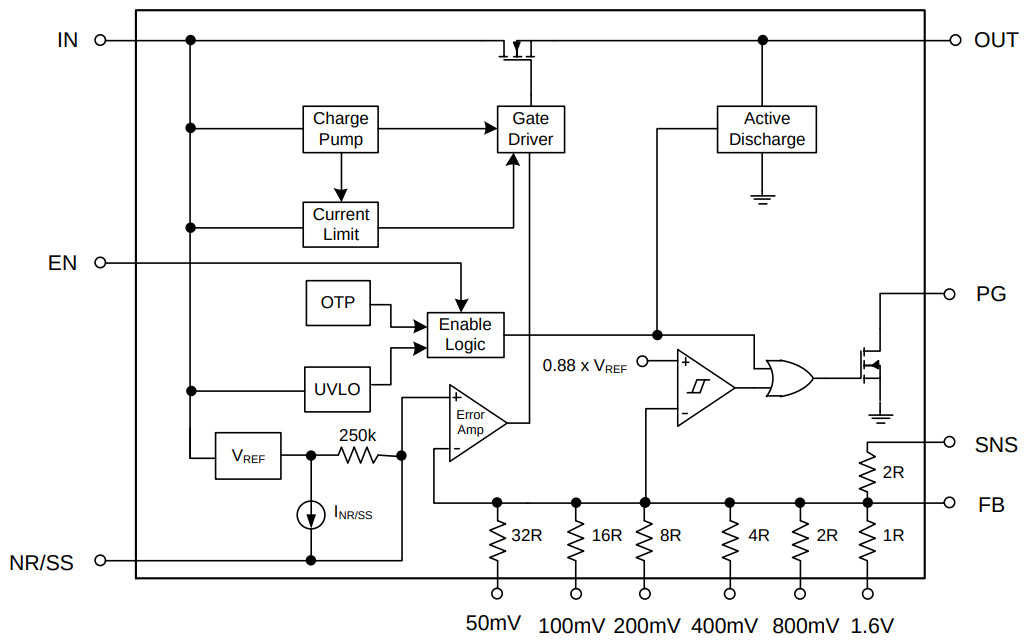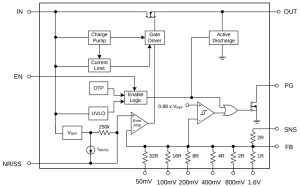
Called AP7179D, it has ±1% output accuracy (Vin = Vout + 300mV) across line, load and temperature, according to the company, and it drops 180mV (maximum) with 3A of load.
Its low-noise reference and error amplifier contribute to 4.4µVrms typical operation at 800mV output (7μVrms at 5V), and PSSR (power supply rejection ratio) is said to be 40dB at 500kHz.
“Delivering a clean supply, AP7179D is optimised for powering noise-sensitive components, such as serdes, RF components and data converters,” it said.
Input range is 1.1 to 6.5V, and there are two output voltage selection modes: programmable between 0.8V and 3.95V in 50mV steps via six pads and binary coding, or adjustable using an external resistor divider from 0.8V to 5.5V.
In operation, ground current is a few milliamps – for example 5mA max with Vin = 1.4V and 3A out.
A power-good output and an enable input are also provided.
The device is stable with 47μF or larger ceramic output capacitors.
When the device is disabled, it discharges capacitance connected to its output through an internal pull-down mosfet that dumps though a resistance (“several hundred ohms”) to ground, but “do not rely on the active discharge circuit for discharging a large amount of output capacitance after the input supply has collapsed because reverse current can possibly flow from the output to the input,” said Diodes. “External current protection should be added if the device may work at a reverse voltage state.”
Packaging is 20pad W-QFN3535.







